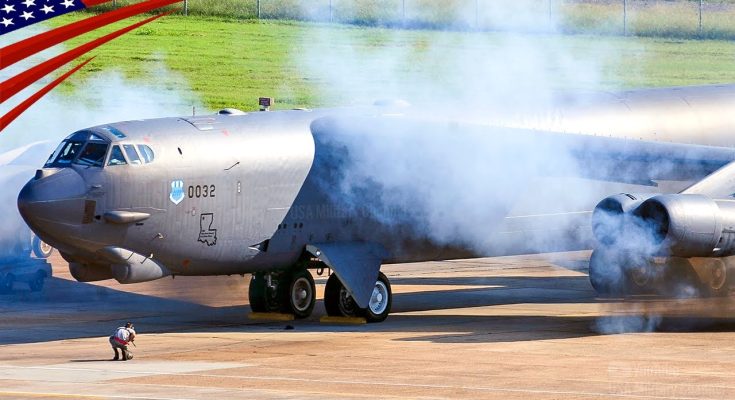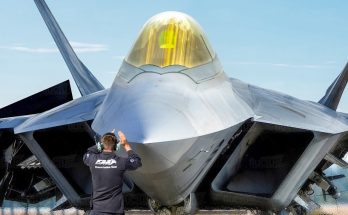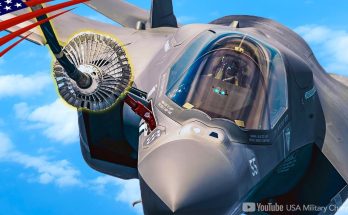The Boeing B-52 Stratofortress is a legendary heavy bomber that has served the U.S. Air Force for more than six decades. Known for its long-range, subsonic flight, and impressive payload capacity, the B-52 continues to be a key element of the U.S. strategic bomber fleet. One of the more intriguing and lesser-known aspects of this iconic aircraft’s operation is its engine start-up process, specifically the use of small explosives to power the engines during a scramble.
The B-52’s Engine Start-up Process
The B-52 Stratofortress is equipped with eight Pratt & Whitney TF33 engines, which are turbojet engines capable of producing substantial thrust. These engines are not powered in the traditional sense with an electrical start-up system like many modern civilian or military aircraft. Instead, the B-52 uses a unique and older technique known as the “start cartridge” method to initiate engine power.
In this process, small explosive charges are used to get the engines spinning. The start cartridge is a small, disposable explosive device that is inserted into the engine’s starter system. This system is critical because, when the explosive charge is ignited, it generates a burst of gas that spins the engine’s compressor, which then allows the engine to begin the process of producing its own power and sustaining engine operation.
The Role of Small Explosives: Start Cartridge System
The explosive charges used in the start cartridge are essentially small pyrotechnic devices that release a burst of high-pressure gas when ignited. This burst of gas is directed into the engine’s starter, a mechanism designed to rotate the engine’s compressor blades. By spinning the compressor blades, the engine begins the process of drawing in air, compressing it, and eventually igniting fuel to generate thrust.
This method is necessary because the B-52’s engines, like many older military aircraft engines, rely on external power sources to get started. Since the B-52 is designed for long-range missions and can take off from various bases with minimal infrastructure, it needs to be able to start its engines quickly and reliably in any environment. The use of small explosives ensures that the engines can start efficiently, even in challenging conditions or when the aircraft is at a remote airfield where traditional power sources may not be available.
The Scramble: Quick Engine Start for Rapid Response
When the B-52 is scrambled—often in response to a sudden operational need or during a high-priority mission—time is of the essence. Bombers like the B-52 must be able to take off quickly, whether in a simulated combat situation or in a real-world scenario where every minute counts. The process of starting the engines, also known as “spooling up”, must occur rapidly to ensure the aircraft can take off on time.
The start cartridge method allows for a quick engine start, as the small explosive charge produces the gas needed to get the engines turning within seconds. This process can be performed even if the aircraft is in a high-alert situation, such as an alert pad at a military airbase, or if the B-52 is required to quickly respond to a mission in a combat zone. Given the B-52’s role as a strategic asset, capable of carrying nuclear weapons or conventional bombs, this quick engine start-up process is critical for maintaining operational readiness.
The Technology and Safety Considerations
While the use of small explosives in engine start-ups might sound unusual, it is a proven, reliable method that has been used for decades in various military aircraft. The system itself is designed with safety features to ensure that the explosive charges are handled properly and don’t pose a danger to the crew or the aircraft during normal operations. The cartridges are installed and removed by ground crews with great care, and all safety protocols are followed during engine start-up procedures.
Modern iterations of the B-52 have received extensive upgrades to enhance their avionics, engine systems, and overall safety. However, the use of small explosive start cartridges remains one of the key aspects that sets the B-52 apart from newer bombers, many of which use more conventional electric or air-driven methods for starting their engines.
Conclusion
The B-52 Stratofortress’s use of small explosive charges to power its engines during a scramble or engine start is a testament to the aircraft’s adaptability and resilience. While newer aircraft have largely moved away from this method, the start cartridge system remains a critical element of the B-52’s operations, ensuring that this venerable bomber can get off the ground swiftly, whether in an emergency or during a regular mission. In a world where speed and readiness are crucial, this unique engine start-up process ensures that the B-52 can continue its mission to defend the skies with unmatched efficiency and reliability.



